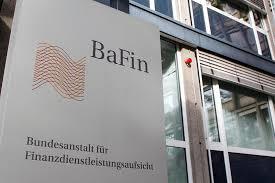The creation of the euro played a bad trick on currency managers. To begin with, currency managers had strong performance and information ratios, and this was managed with only 20 currencies (which given cross hedging gave a fair opportunity set). A number of research studies suggested that the alphas in currency management were approximately 150 bps annualised and information ratios ranged from 0.5-0.7. However, the arrival of the euro took 10 currencies off the table – this would be akin to an equity manager being told that the S&P500 was now suddenly just the S&P250!
Currency managers have historically used two basic types of directional strategies to outperform benchmarks, broadly labeled ‘Trend’ and ‘Fundamental’. The most naïve Trend strategy is to buy the currency that went up last month and sell the currency that went down last month. In spite of terrible drawdowns, this strategy turns a positive return and has a positive information ratio as shown in figure 1. The second naïve strategy – under the Fundamental umbrella is to buy high interest rate currencies and sell low interest rate currencies. This strategy too makes money over long cycles as shown in figure 2. However, both these directional strategies use only forward contracts and hence when the opportunity set is limited to 10 currencies, the average manager can be long or short any one currency pair, leading to a limited diversification of risk. In all, the managers can only take one position in a currency (long or short) and hence have a limited ability to diversify.
The creation of the euro has led to more lumpy performance of currency managers as risks get more concentrated in a few trades. However, few currency managers have evolved their strategies to diversify the risk. There are two simple ways to diversify risk – either include new instruments – options rather than just forwards – or add more currencies by including emerging markets (to give an additional 22 tradable currencies).
In this brief article, we examine the use of options to give more alpha, greater diversification, better information ratios and better drawdowns, not to mention less negative months.
Options are a derivative contract as well that depend on other parameters in the currency markets such as currency volatility. One of the nice things in options markets is that managers can enter into two contracts in the same currency – a put option (or the right to sell a currency at a prespecified price if its value falls below a certain threshold) and a call option (or the right to buy a currency at a prespecified price if its value goes above a certain threshold). As a result of adding options, the client should realise immediately that the number of transactions that can be entered into doubles – from just eight or nine trades using forwards to 25-30 trades using forwards and options. This additional diversification is likely to lead to better alphas per unit of risk or higher information ratios. In addition, managers who are sophisticated in the use of options can enter into transactions such as strangles or straddles (which involve the simultaneous purchase or sale of both puts and calls) to make more effective portfolios.
In the attached figure 3, we demonstrate the simulated performance of a naïve Options strategy. Once again, this strategy, like the naïve trend and fundamental strategies, has a very attractive performance profile. We were fortunate to have a client run an analysis of such a simple strategy against the performance of 13 currency overlay managers from 1998 – May 2003. What is shocking is that the performance of the naïve strategy, with no knowledge of manager positions, is negatively correlated to 10 managers and largely uncorrelated with the remaining three. Hence, even a naïve addition of the naïve options strategy to portfolios with existing currency managers can help raise alpha and improve consistency in performance without increasing overall tracking error. We have demonstrated in related research that we can make clients “less grumpy by making performance less lumpy”.
In summary, clients who either have existing trend and fundamental managers, or those seeking to implement currency mandates with no prior experience should look to options-based strategies to not only generate alpha, but also diversify the risk of the currency programme. This is effected through not only an increase in the number of possible transactions (which should help information ratios), but also through the lack of correlation with existing strategies. Clients should ‘unstrangle’ performance by ensuring that their overall programme ‘straddles’ trend, fundamental and options strategies.
Arun Muralidhar and Harish Neelakandan are with FX Concepts in New York





























No comments yet